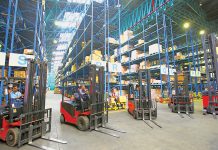Forming strategic alliances with other logistics players, such as carriers, customs brokers, or technology providers, can lead to synergies and expanded service offerings, says Xerrxes Master, President, AMTOI. He shares the association’s plans to tap potential in new trade routes and establish a presence in untapped markets.
Ritika Arora Bhola
What are AMTOI’s future projections for the industry?
The future of the Indian cargo industry looks promising, with projections indicating continued growth and evolution. Some key projections for 2023 include:
- Steady growth: The industry is expected to maintain its growth trajectory, driven by factors, such as robust economic growth, increased consumer spending, and the expansion of e-commerce
- Shift to air cargo: Air cargo is projected to witness substantial growth due to its speed and efficiency in transporting high-value and time-sensitive goods. The rise of e-commerce and the need for faster deliveries will further boost the demand for air cargo services
- Infrastructure development: The Union government has prioritized infrastructure development, including the improvement of roadways, railways, ports, and airports. Initiatives such as Bharatmala Project and Sagarmala Project aiming to enhance connectivity and logistics efficiency, which will impact the cargo industry
- Technology integration: Advanced tracking systems, Internet of Things (IoT) devices, and data analytics will play a crucial role in improving supply chain visibility, optimizing route planning, and enhancing operational efficiency
Share with us AMTOI’s projects in pipeline?
- Geographic expansion: We plan to expand our operations to new regions or countries with emerging market potential, allowing us to tap into new trade routes and establish a presence in untapped markets
- Service portfolio diversification: We are exploring opportunities to introduce specialized offerings to cater to specific industries or niche markets. These include services such as temperature-controlled logistics or hazardous goods transportation
What are the current opportunities in Indian logistics sector?
- Last-mile delivery solutions: The rise of e-commerce and changing customer expectations create opportunities for freight forwarders and
NVOCCs to offer efficient last-mile delivery solutions, including partnerships with local delivery providers - Specialized trade lanes: Focusing on specialized trade lanes or industry-specific logistics solutions, such as pharmaceuticals, perishables, or automotive, can open
niche opportunities and higher-value services - Collaborations and partnerships: Forming strategic alliances with other logistics players, such as carriers, customs brokers, or technology providers, can lead to synergies and expanded service offerings
- Trade facilitation initiatives: Keep an eye on the trade facilitation initiatives and free trade agreements (FTAs) between the countries as they would create new market opportunities and reduce the barriers for international trade
As the industry evolves, embracing technology and providing excellent customer service will be crucial for the freight forwarders and the NVOCCs to thrive in this year and beyond.














